Delving into the art of embroidery often prompts the question, “Can I use Aida for Hardanger?” The traditional techniques of Hardanger embroidery, with its delicate cutwork and drawn thread elements, are typically associated with even-weave fabrics like linen.
However, the versatility of Aida fabric, known for its grid-like structure, sparks curiosity among stitchers. This inquiry arises from the desire to explore alternatives and adapt the cherished art of Hardanger to different materials.
In this exploration, we aim to unravel the possibilities, considerations, and creative adaptations that arise when contemplating the use of Aida for Hardanger embroidery.
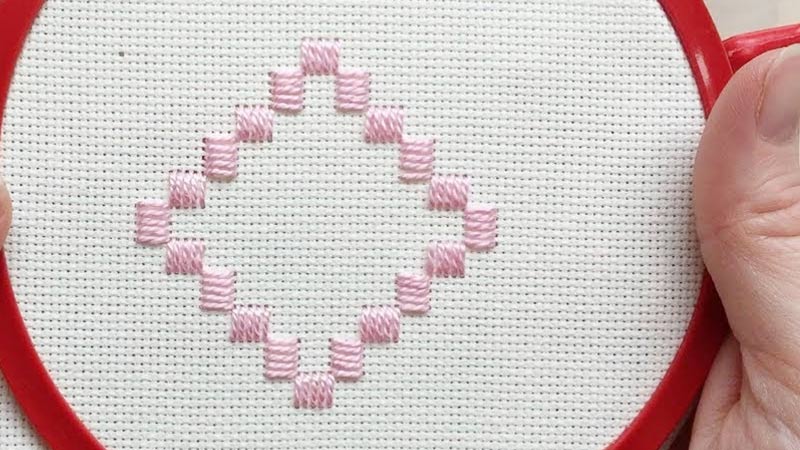
What Is Hardanger Embroidery?
Hardanger embroidery is a traditional form of whitework originating from Norway, characterized by intricate cutwork and delicate geometric patterns.
Typically worked on even-weave fabric, such as linen or cotton, Hardanger embroidery combines counted thread techniques with drawn thread work.
Hardanger’s hallmark is using satin stitches, eyelets, and needle weaving to create symmetrical designs and lacy effects. The term “Hardanger” also refers to the specific type of fabric used in this embroidery style.
Often associated with heirloom pieces and decorative linens, Hardanger embroidery has gained popularity worldwide.
Enthusiasts can explore their creativity with readily available Hardanger embroidery kits, which provide essential materials and instructions for crafting beautiful, timeless whitework designs.
Can I Use Aida For Hardanger?

While traditional Hardanger embroidery is typically worked on even-weave fabrics like Hardanger fabric or linen, it is possible to use Aida cloth for this technique.
Aida fabric, known for its grid pattern of evenly spaced holes, provides a stable foundation for stitching. However, adapting Hardanger to Aida may involve some modifications, as the traditional cutwork and drawn thread techniques might be challenging due to Aida’s woven structure.
Despite this, many crafters have successfully experimented with Aida for Hardanger, creating unique and visually appealing pieces.
It’s essential to consider the intricacy of your design and personal preferences when deciding whether to use Aida for your Hardanger embroidery project.
5 Hardanger Patterns
Embark on a journey of intricate needlework with these five captivating Hardanger patterns that showcase the beauty of cutwork and drawn thread techniques.
Each pattern elevates your stitching skills and creates stunning, delicate pieces.
1. Classic Diamond Delight
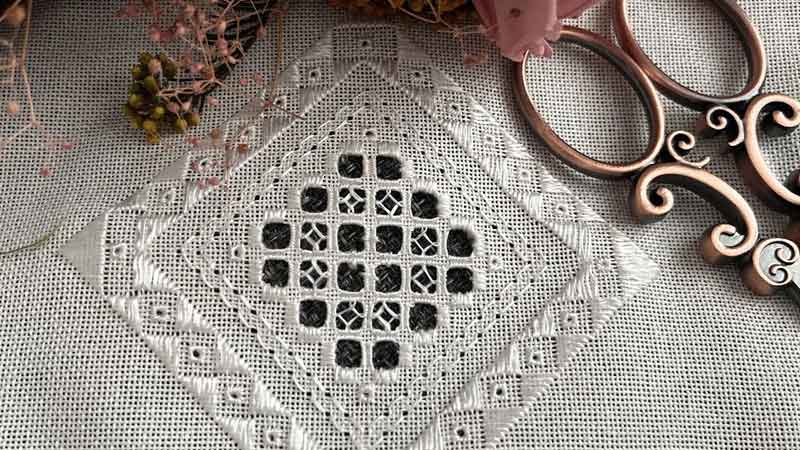
Embrace the timeless elegance of Hardanger with this classic diamond-inspired pattern. Featuring a combination of satin stitches, picots, and delicate cutwork, this design captures the essence of traditional Hardanger embroidery.
The geometric precision and symmetry make it an ideal project for both beginners and seasoned stitchers looking to hone their skills.
2. Floral Symphony Sampler
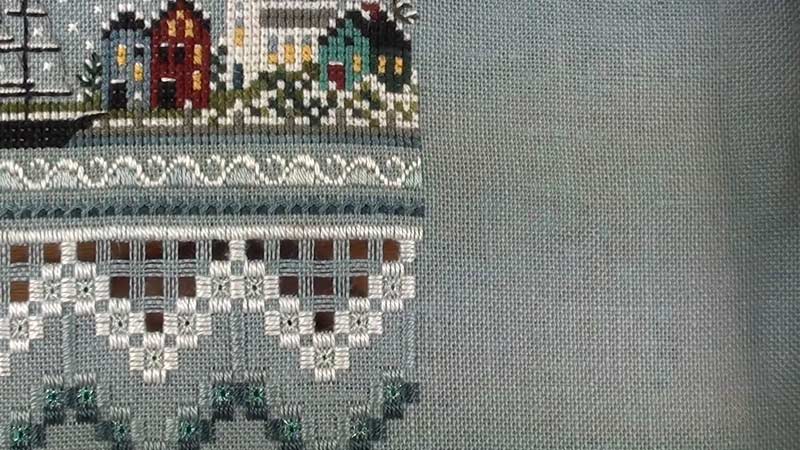
Immerse yourself in the world of botanical beauty with a Hardanger pattern that intricately weaves delicate florals into the fabric.
This sampler introduces various drawn thread techniques, creating a harmonious blend of blooms and lacy textures.
Perfect for those seeking a project that combines nature-inspired motifs with the artistry of Hardanger embroidery.
3. Victorian Lace Elegance
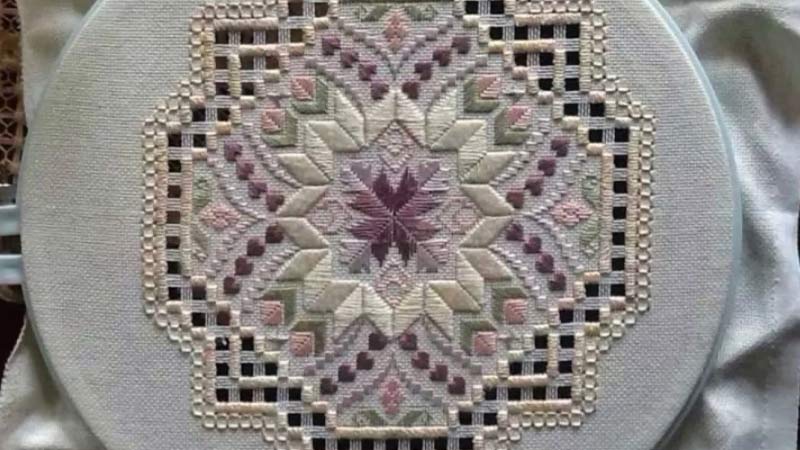
Transport yourself to an era of opulence with a Hardanger pattern inspired by Victorian lace. This design incorporates elaborate motifs and intricate borders, showcasing the richness and sophistication of Hardanger embroidery.
The combination of openwork and precise stitches adds a touch of vintage charm to any stitching project.
4. Contemporary Geometric Fusion
Explore the fusion of tradition and modernity with a Hardanger pattern incorporating contemporary geometric elements.
This design pushes the boundaries of conventional Hardanger, offering a fresh perspective on cutwork and drawn thread techniques.
It is ideal for those looking to add a touch of innovation to their embroidery repertoire.
5. Seasonal Whimsy Ornaments
Celebrate the changing seasons with a set of whimsical Hardanger ornament patterns. From snowflakes for winter to blooming florals for spring, these designs infuse festive charm into Hardanger embroidery.
The versatility of these patterns allows for creative expression, making them perfect for crafting unique seasonal decorations or delightful handmade gifts.
Hardanger Vs. Aida
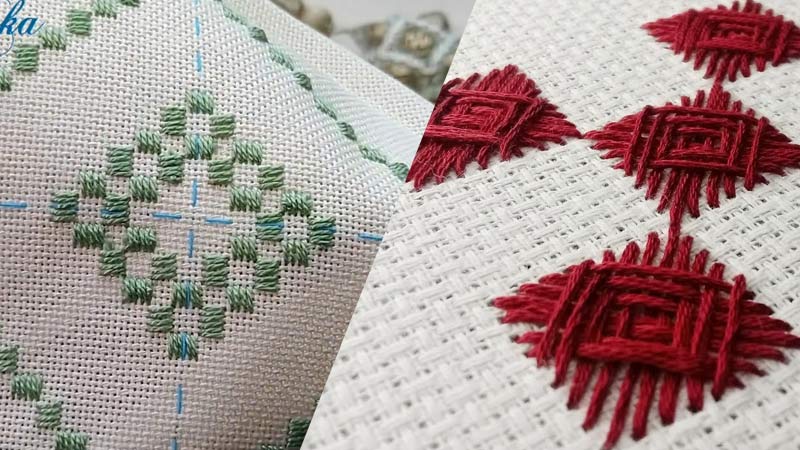
Here’s the difference between Hardanger and Aida:
| Criteria | Hardanger Fabric | Aida Fabric |
| Fabric Type | Even-weave cotton or linen | Woven fabric with regularly spaced holes |
| Weave Structure | It can be used for Hardanger with some adaptations | Grid pattern with visible holes |
| Suitability for Hardanger | Traditionally used for Hardanger embroidery | Can be used for Hardanger with some adaptations |
| Thread Count | Higher thread count for finer details | Varied thread count, available in different sizes |
| Cutwork & Drawn Thread Techniques | It is ideal for intricate cutwork and drawn thread | This may pose challenges due to the woven structure |
| Common Use | Traditional for Hardanger embroidery | Widely used for cross-stitch and other needlework projects |
| Ease of Counting | Easy to count threads for accurate stitching | Counting holes in the grid facilitates stitching |
| Texture | Smooth and fine texture | Stiffer texture due to the woven grid |
| Availability | Specialty fabric for Hardanger | Readily available in various colors and sizes |
While Hardanger fabric is specifically designed for traditional Hardanger embroidery, Aida fabric can be adapted for Hardanger with some adjustments, making it a versatile choice for different needlework projects.
The choice between Hardanger and Aida depends on the desired outcome, the complexity of the design, and personal preferences.
How To Do Hardanger Embroidery?
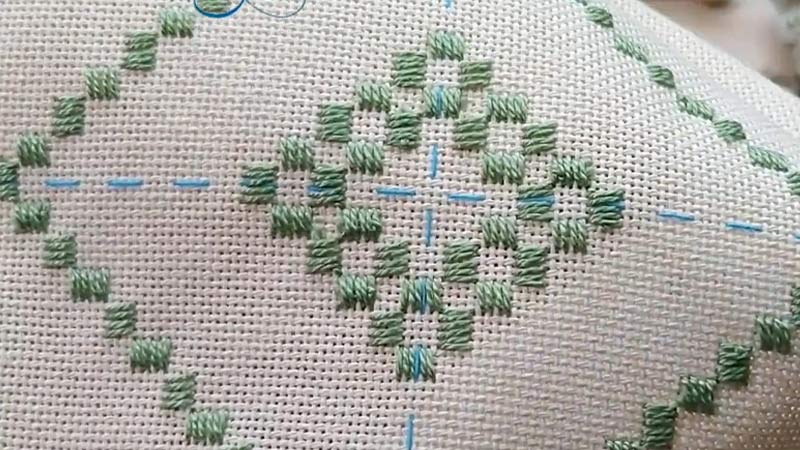
Embarking on the captivating journey of Hardanger embroidery is a delightful endeavor, showcasing the art of cutwork and drawn thread techniques. Below are five simple methods to guide you through the intricacies of this traditional craft:
Selecting the Right Hardanger Fabric
Begin by choosing a suitable fabric for your project. Opt for an even-weave fabric like linen or cotton specifically designed for Hardanger embroidery.
The tight, fine weave of Hardanger fabric provides a stable foundation for the delicate stitches and cutwork.
Mastering the Satin Stitch
Satin stitches play a crucial role in Hardanger, creating solid areas and adding texture to the design. Master the satin stitch by working it evenly and smoothly, ensuring your embroidery has a polished and professional finish.
Embracing Drawn Thread Techniques
Explore the beauty of drawn thread techniques, which involve pulling out specific threads to create open spaces in the fabric.
Experiment with different methods like Kloster blocks and needle weaving to achieve various patterns and textures in your Hardanger piece.
Creating Picots for Decorative Edge
Picots add a decorative edge to Hardanger projects, enhancing the overall aesthetic. Learn to create picots by folding and securing threads, adding charming detail to the cutwork, and contributing to the intricate beauty of your embroidery.
Incorporating Needleweaving for Texture
Needle weaving is a signature technique in Hardanger, introducing texture and dimension to the design. Follow simple patterns to weave threads through the open spaces, creating intricate patterns and enhancing the visual appeal of your Hardanger masterpiece.
With these methods, you can confidently embark on your Hardanger embroidery journey, creating pieces that showcase the elegance and precision of this timeless needlework art.
How To Fix Hardanger Cutting Mistake?
Embarking on a project in the intricate realm of Hardanger embroidery often involves navigating delicate cutwork, and mistakes can occur. Fear not, as there are ways to rectify cutting errors and salvage your masterpiece.
Here are five methods to help you fix mistakes in Hardanger:
Reinforcing with Satin Stitches
If you accidentally cut a thread that shouldn’t have been, reinforce the area with additional satin stitches. This method helps secure the fabric and minimizes the visual impact of the mistake.
Use threads matching the original colors to blend the reinforcement with your Hardanger embroidery fabric seamlessly.
Adding Extra Needleweaving
Introduce extra needle weaving to compensate for the cutwork mistake. Weave additional threads through the open spaces, following the existing pattern or creating a complementary design.
This technique not only conceals errors but also enhances the overall texture of your Hardanger piece.
Utilizing Decorative Stitches
Incorporate decorative stitches strategically to cover cutting mishaps. Select stitches that complement the surrounding design and camouflage any irregularities.
This method adds visual interest and turns an unintended mistake into a purposeful design element within your hardanger cross stitch.
Blending with Thread Coloring
Skillfully blend thread colors to disguise cutting errors. Choose a thread shade that closely matches the surrounding areas, allowing you to camouflage the mistake subtly.
This approach effectively creates a seamless transition and maintains the overall aesthetic integrity of your Hardanger embroidery.
Patchwork with Additional Fabric
Consider patching the area with additional hardanger embroidery fabric in cases where the mistake is irreparable. Carefully attach a small piece of matching fabric over the error, securing it with small stitches.
This method provides a practical solution while preserving the overall beauty of your Hardanger creation.
By employing these strategies, you can gracefully address and rectify cutting mistakes in your Hardanger embroidery, ensuring that your final piece reflects the precision and artistry characteristic of this timeless needlework technique.
FAQs
Will using Aida affect the intricate cutwork characteristic of Hardanger embroidery?
Aida’s structure may challenge traditional cutwork, but creative adjustments and innovative approaches can still yield beautiful results.
Does Aida provide the same level of stability as traditional Hardanger fabric?
Aida’s stability may differ, but careful stitching and fabric preparation can enhance its suitability for Hardanger embroidery.
Are there specific Aida fabric sizes or counts recommended for Hardanger?
Experiment with different Aida sizes, but smaller counts may present challenges with finer details. Choose a size that complements your project’s intricacy.
Can I achieve the open spaces and drawn thread effects on Aida as I would on traditional fabric?
Adapt drawn thread techniques to Aida’s grid by selectively skipping holes. Experimenting with stitch tension can help create openwork effects.
Is there a trade-off in authenticity when using Aida for Hardanger?
While Aida offers convenience, there may be differences in the final look. The choice between Aida and traditional fabric depends on personal preferences and project goals.
Conclusion
The question of using Aida for Hardanger is met with both challenges and possibilities. While Aida’s woven structure poses some limitations for traditional Hardanger techniques, creative stitchers have found ways to adapt and innovate.
Experimenting with Aida for Hardanger invites exploration into a fusion of different embroidery worlds.
Whether for convenience or a desire to infuse a contemporary twist into this traditional craft, the choice between Aida and traditional fabrics for Hardanger ultimately depends on the individual’s preferences and the specific goals of the embroidery project.
Through such inquiries, the rich embroidery tapestry continues to evolve, embracing tradition and innovation.
Leave a Reply